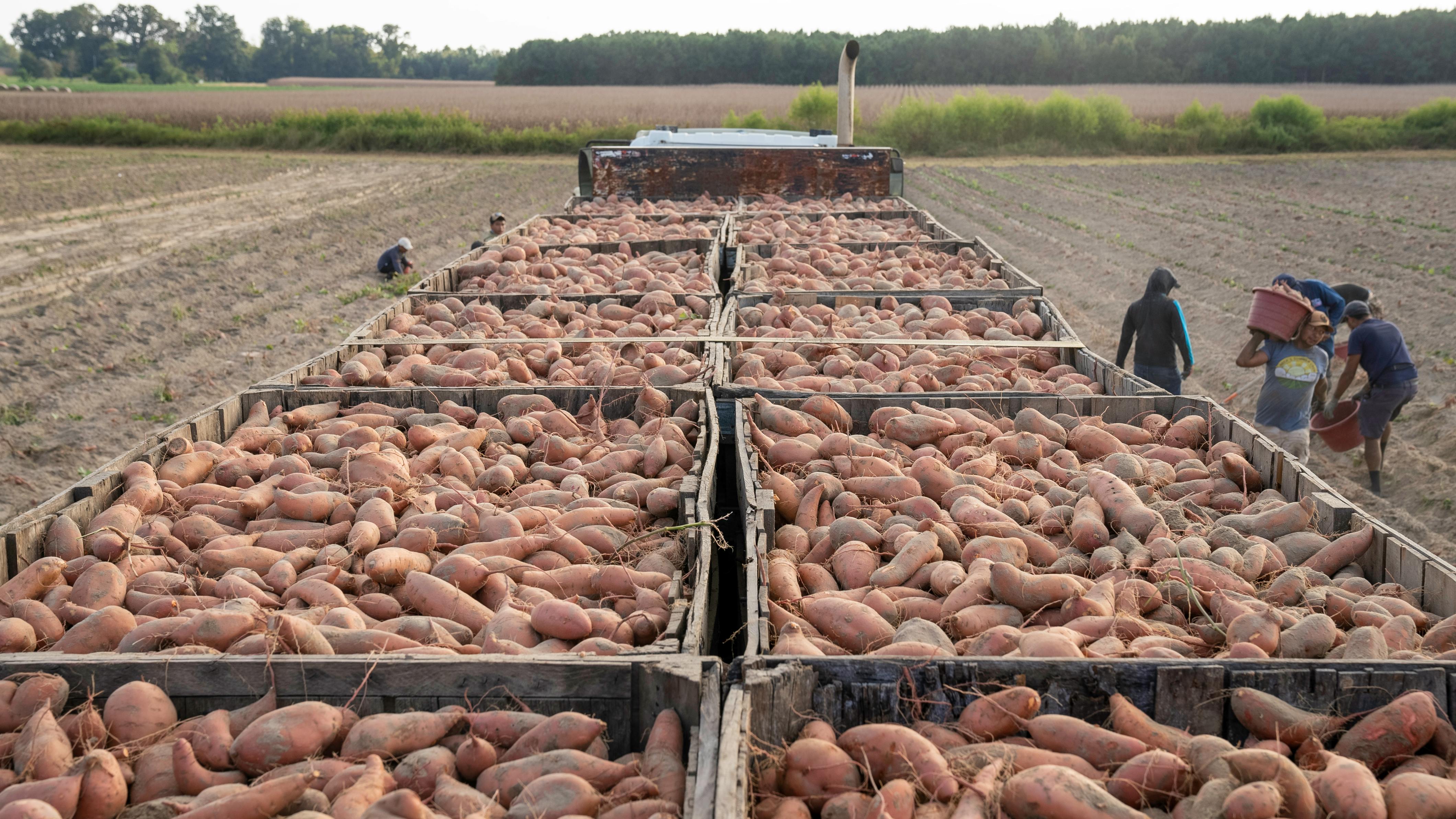Effective Ways to Plant Carrots for Improved Growth in 2025

Apply Now


Effective Strategies for Planting Carrots in 2025
Carrots are not only a delicious addition to your meals but also a rewarding crop to grow in your garden. They offer numerous health benefits, are relatively easy to care for, and can be planted in various conditions, whether in a backyard or a container. Knowing how to plant carrots effectively can significantly influence their growth rate and quality. This article aims to provide comprehensive insights into planting carrots for improved growth in 2025, including essential tips on soil preparation, watering, pest control, and harvesting techniques. As you venture into growing carrots, understanding their specific needs—such as soil type, nutrients, and plant spacing—will help you cultivate a thriving carrot garden. In this guide, we will explore the steps required for successful carrot planting, the differences between various carrot varieties, and best practices for care throughout various growth stages. By following these carrot planting tips, you can enjoy abundant harvests of tender, vibrant carrots tailored to your gardening preferences. With proper care and attention, your carrot garden can thrive through spring, summer, and even into fall. Let’s dive into the essential methods that can help you grow the best carrots possible.Soil Preparation for Carrots: Laying the Groundwork
Creating the right soil environment is crucial for the success of your carrot crop. Carrots thrive in loose, well-drained soil that allows their roots to grow deep and unobstructed. Ideally, the soil should have a pH between 6.0 and 6.8, as this range optimizes nutrient uptake for the plants. Moreover, it's important to enrich your carrot beds with organic matter, like compost or well-rotted manure, to enhance soil structure and fertility. This not only nourishes the plants but also improves moisture retention and drainage, both of which are critical for carrot root development. When preparing your soil, aim to till it to a depth of 12 inches to ensure a good growing space for the roots. Additionally, break up any compacted soil and remove rocks that might hinder root growth.Nutrients for Carrots: What They Need
Understanding the nutritional needs of carrots is vital for optimal growth. Carrots require a balanced supply of nitrogen, phosphorus, and potassium. Too much nitrogen can lead to excessive foliage at the cost of root development, which is why soil tests can help gauge existing nutrient levels. For a balanced fertilization approach, consider using organic fertilizers or amendments such as bone meal for phosphorus and greensand for potassium. These additions will not only promote root health but also help in pest management, as healthy plants are less susceptible to diseases.Optimal Soil Moisture Levels
Consistent soil moisture is essential for carrots, particularly during germination—a phase where seeds can fail if not adequately hydrated. The soil should remain moist but not waterlogged, as over-saturation can lead to rot. Mulching with organic materials like straw can help retain moisture and regulate soil temperature. During dry spells, be proactive with watering, ensuring the top inch of soil remains moist. A simple irrigation technique can improve germination rates and subsequent growth stages significantly.Frost Protection and Seasonal Considerations
Frost can damage young carrot seedlings, so it's necessary to consider seasonal planting times carefully. In many regions, carrots can be planted in early spring or late summer for a fall harvest. When planting in spring, ensure you wait until after the last frost date to set out your seeds. For a late-season crop, cover the seedlings with row covers or mulch to provide an added layer of frost protection. The goal is to provide the optimal conditions for carrot growth while being adaptable to your local climate variations.Understanding Carrot Varieties and Choosing the Right One
One of the exciting aspects of growing carrots is the availability of various varieties, each with distinct flavors, colors, and growing habits. From crunchy orange roots to vibrant purple or yellow varieties, the choice depends on your taste preferences and garden design.Popular Carrot Varieties for Urban Gardens
For urban gardening, consider growing shorter varieties like ‘Thumbelina’ or ‘Little Finger,’ which are perfect for container gardening due to their compact roots. These varieties can thrive in limited soil depths and still produce a flavorful carrot ideal for snacking or salads. If you prefer classic carrots, ‘Nantes’ and ‘Danvers’ are excellent choices for their adaptability and rich taste. These varieties can be grown in a wide range of soil conditions and are well-suited to backyard gardens.Heirloom Versus hybrid Carrot Seeds
Choosing between heirloom and hybrid carrot seeds comes down to your gardening goals. Heirloom varieties, such as ‘Chantenay,’ offer unique flavors and are often more resilient to pests. Conversely, hybrid seeds are genetically developed for high yield and disease resistance, making them a favorite among commercial growers. Understanding the distinctions between these types can help you make informed decisions on which seeds to plant in your vegetable patch.Carrot Care: Watering, Spacing, and Sunlight Needs
Proper carrot care involves more than just planting; it’s essential to understand how to care for the young plants as they grow.Watering Carrots: Techniques for Success
Carrots require consistent moisture to thrive. Set up a watering schedule that allows the soil to remain moist without becoming overly wet. A well-planned irrigation system, such as drip irrigation, can deliver water directly to the plant roots, reducing waste and preventing disease. During the critical growing phases, a deep watering once a week is sufficient, making sure to adjust frequency based on rainfall and temperature conditions.Spacing for Carrots: Giving Them Room to Grow
Proper spacing is crucial, as dormant seedlings can compete for nutrients and water. When sowing carrot seeds, it’s advisable to plant them in rows spaced about 12–18 inches apart, with individual seeds spaced about 2–4 inches apart. As seedlings grow, thinning them to 3–4 inches apart will ensure each plant has adequate room for healthy root development.Companion Planting with Carrots
Companion planting can enhance carrot growth and pest control. Consider planting carrots alongside onions, leeks, and garlic, as these species can deter common pests such as carrot flies. In return, carrots can offer shade and ground cover to protect these companion plants. This method not only maximizes space but also promotes a healthy, biodiverse garden ecosystem.Harvesting Carrots: Timing and Techniques
Knowing when and how to harvest your carrots can significantly affect their flavor and overall quality.Carrot Growth Stages: Signs to Look For
Carrots typically take 60 to 80 days to mature, depending on the variety. Observe the growth stages closely; once the tops of the carrots are visible above the soil and reach the desired width, it’s time to start harvesting. Ensure you gently loosen the soil around the roots before pulling them out to avoid breaking them. A simple fork or spade can help in loosening the soil without damaging the carrot.Cleaning and Storing Harvested Carrots
Once harvested, rinse the dirt off gently and let them dry before storing. Ideal storage conditions involve keeping carrots in a cool, dark place, preferably in a layer of sand or moist paper towels to maintain humidity levels. If you’ve grown a significant batch and want to store them longer, consider utilizing cold storage techniques, which can help preserve their freshness and crunch for several months.Conclusion: Reaping the Rewards of Your Carrot Garden
In summary, successfully planting and growing carrots requires attention to soil preparation, nutrient management, and care throughout their growth stages. By following these effective carrot planting tips, you can maximize your crop yield and enjoy delicious, homegrown carrots in your meals. Whether you’re an experienced gardener or just starting, these methods will help you reap the most rewards from your carrot gardening efforts. Adventure into the world of carrot gardening offers not only nutritious produce but also the joy of cultivating these vibrant vegetables from seed to harvest. With informed practices and a keen eye for detail, you can enjoy the experience and achieve a flourishing carrot crop tailored to your gardening style.
